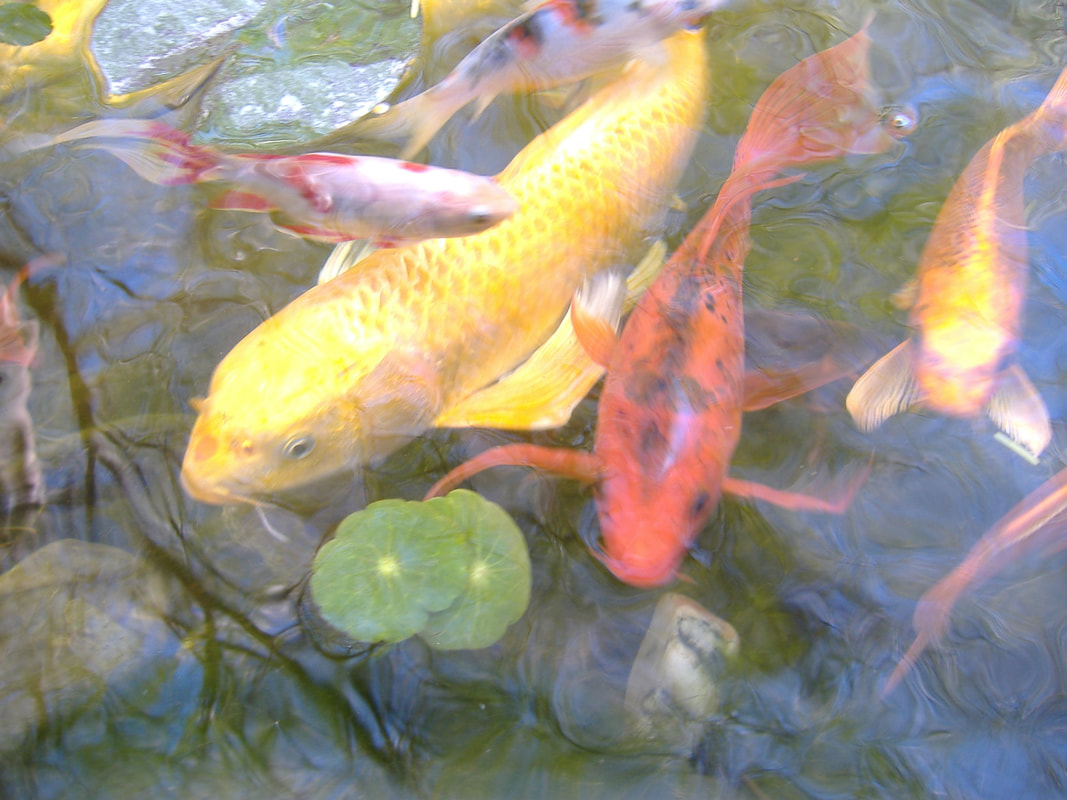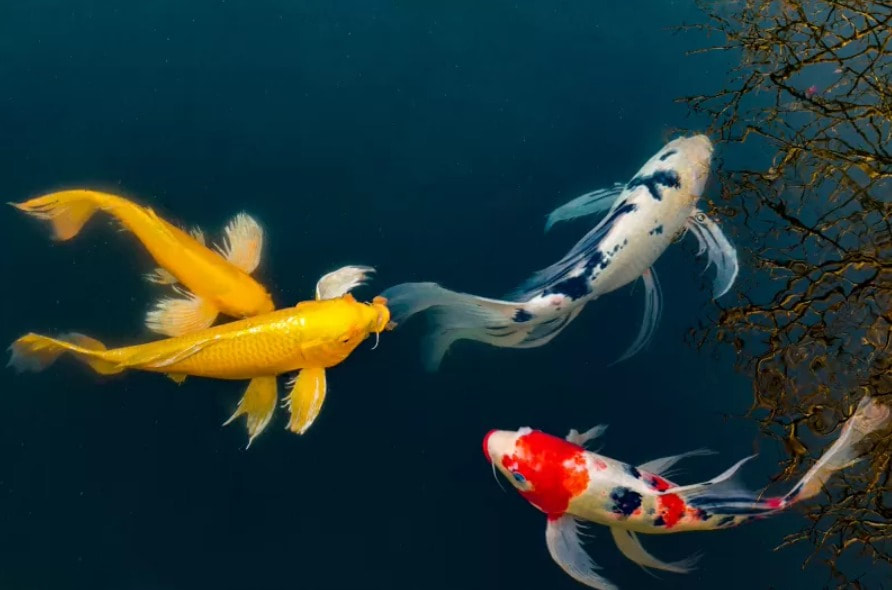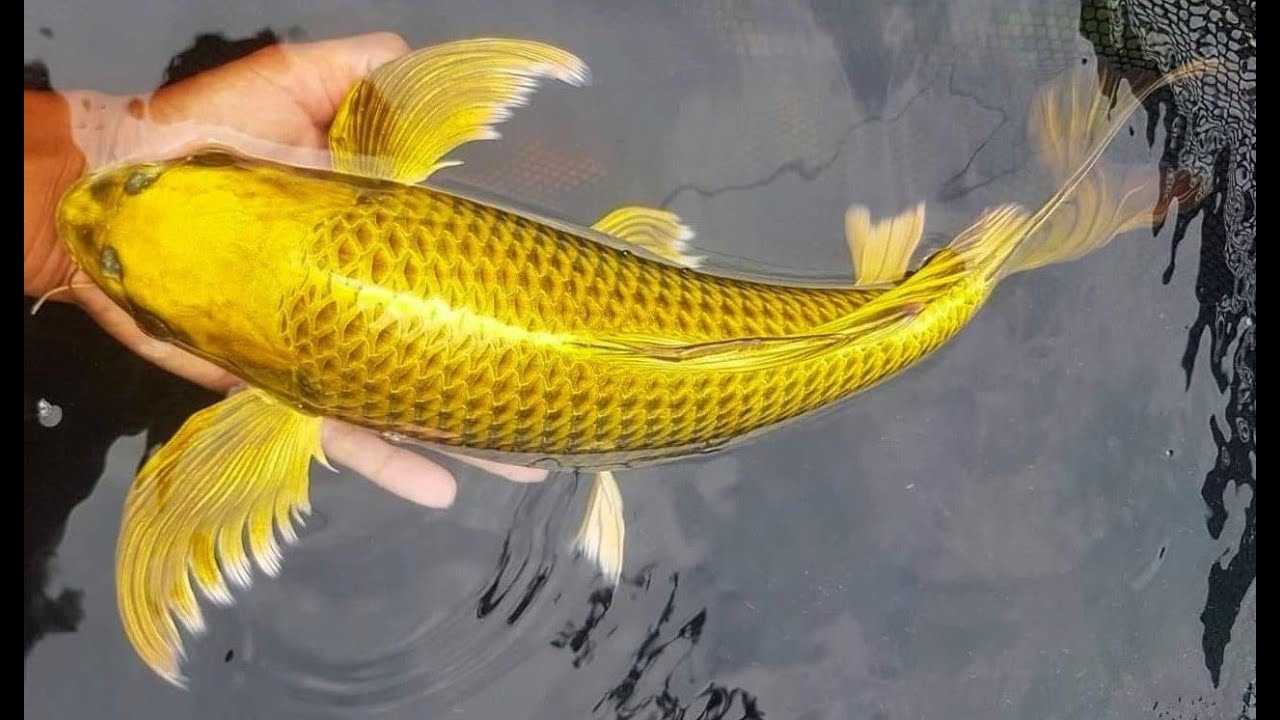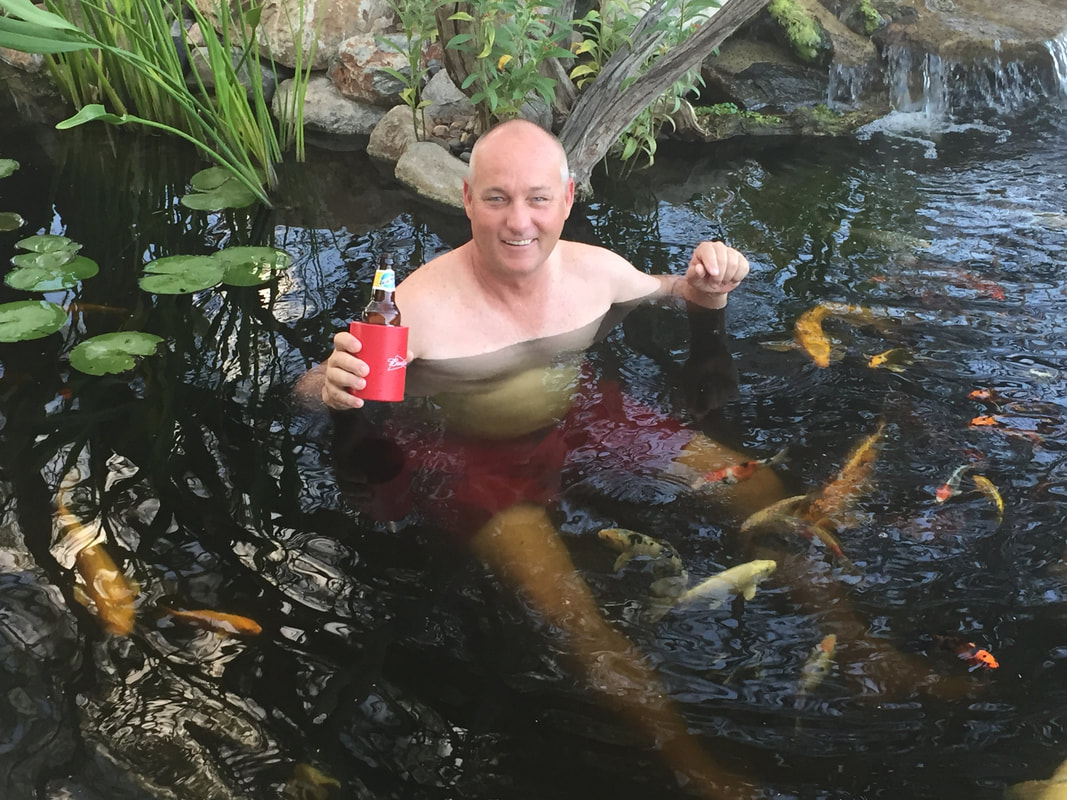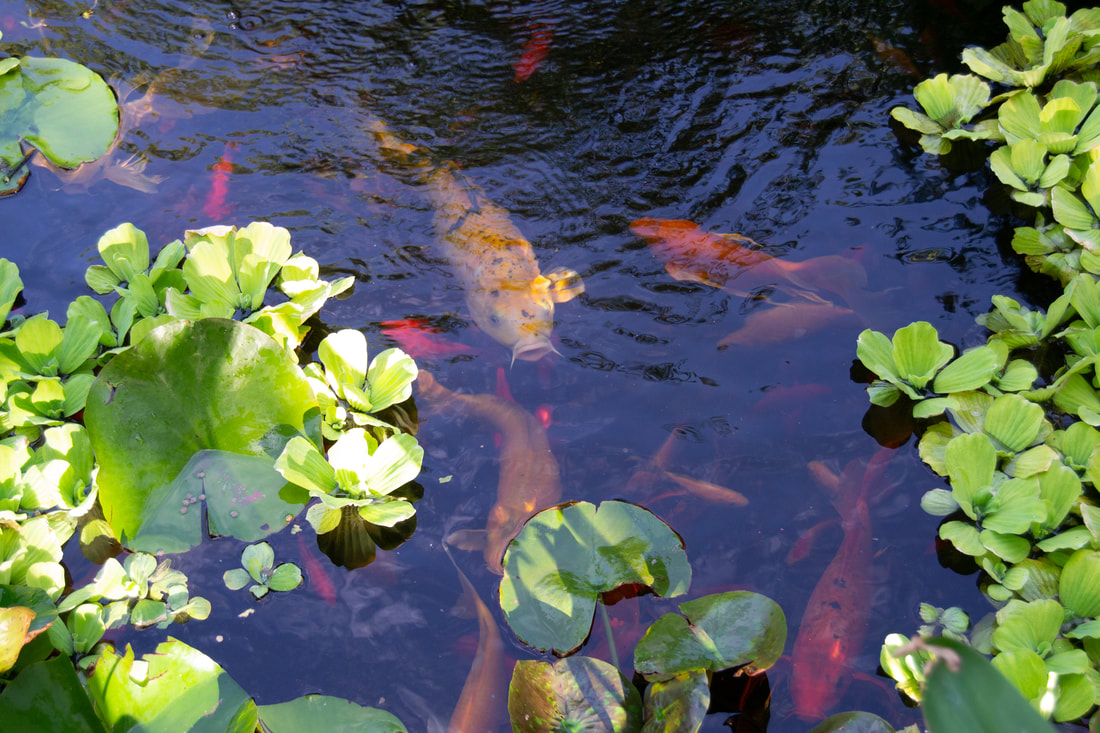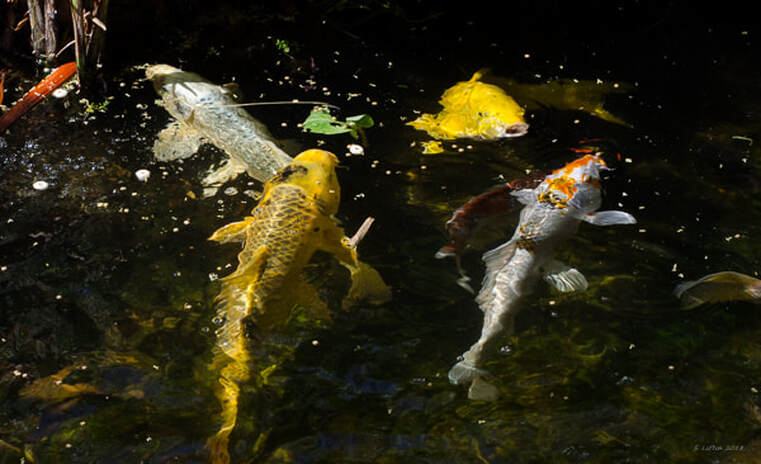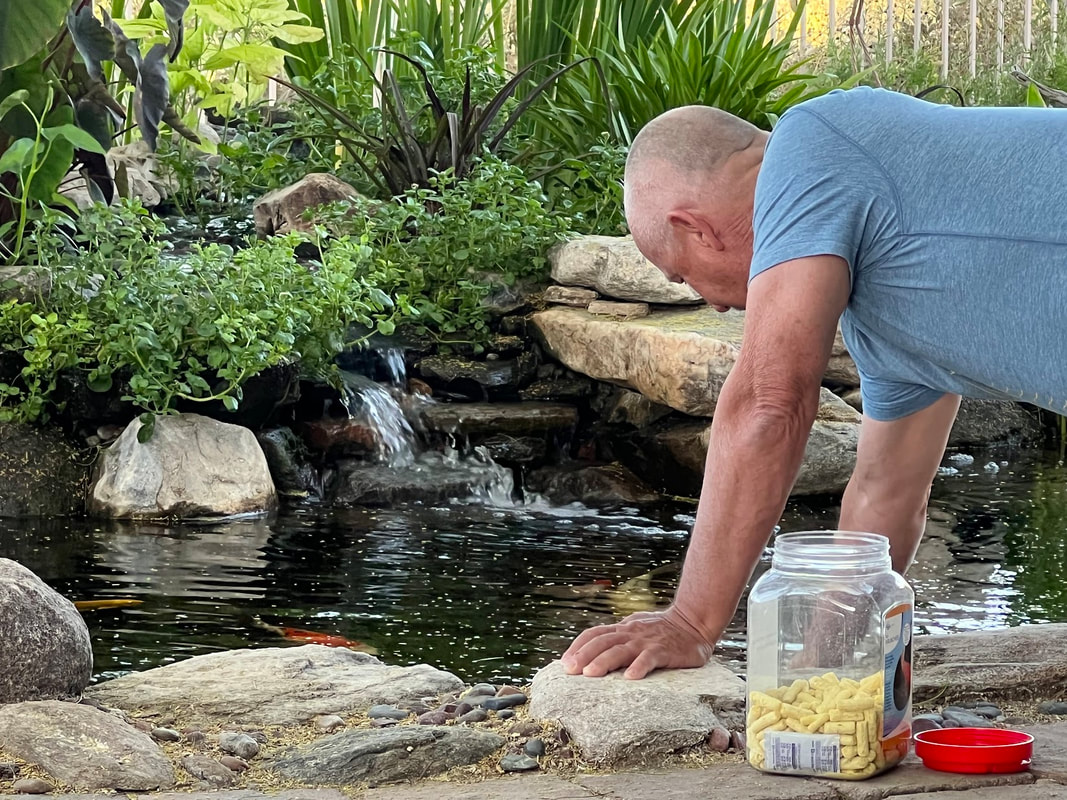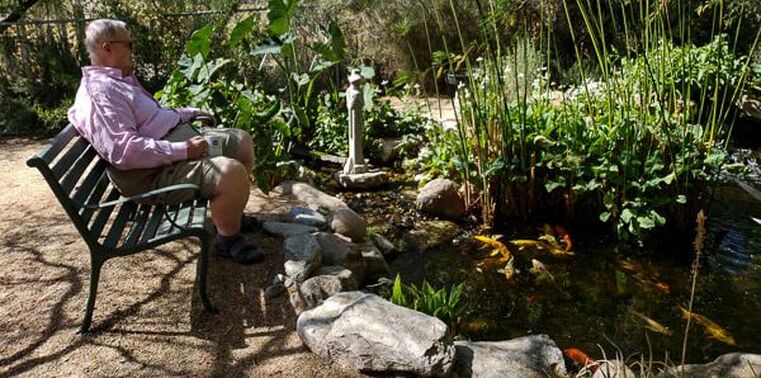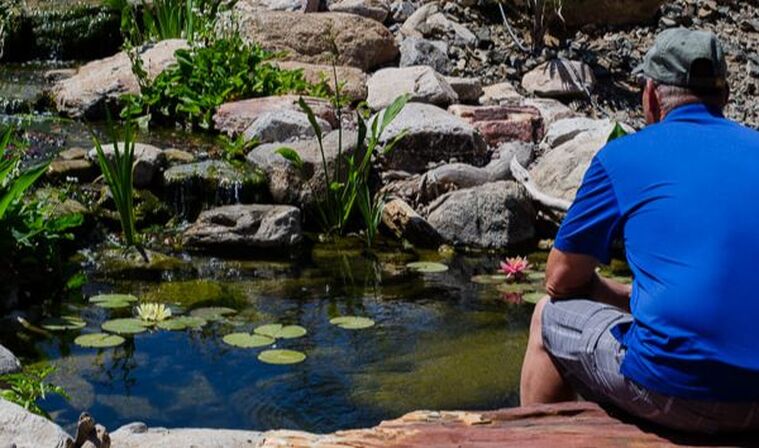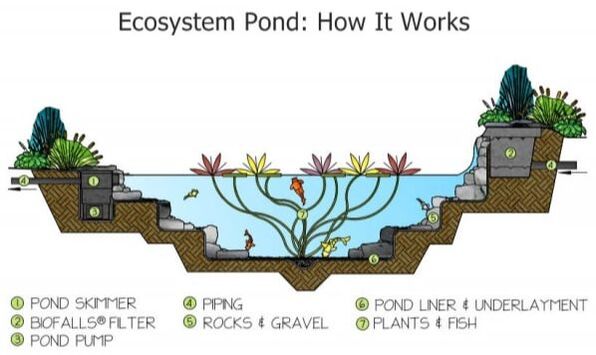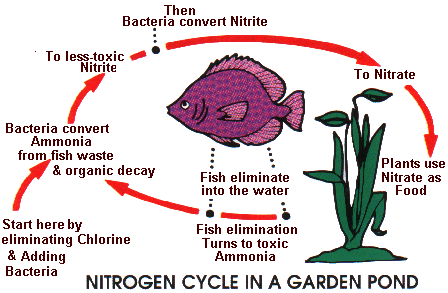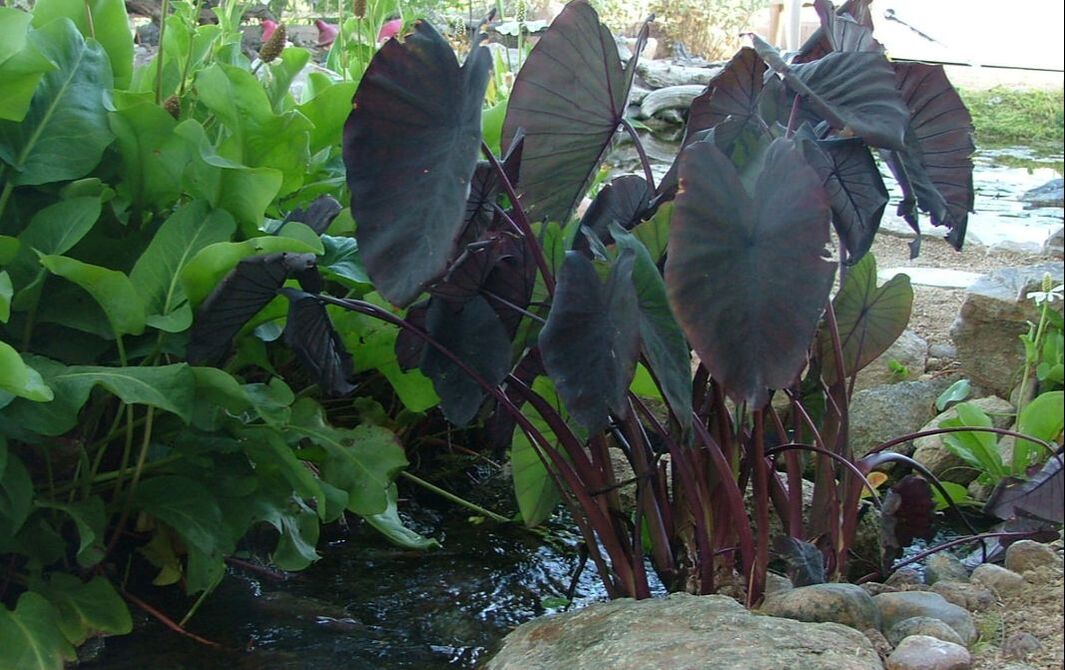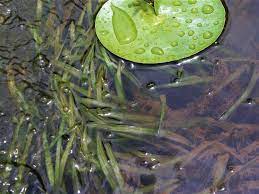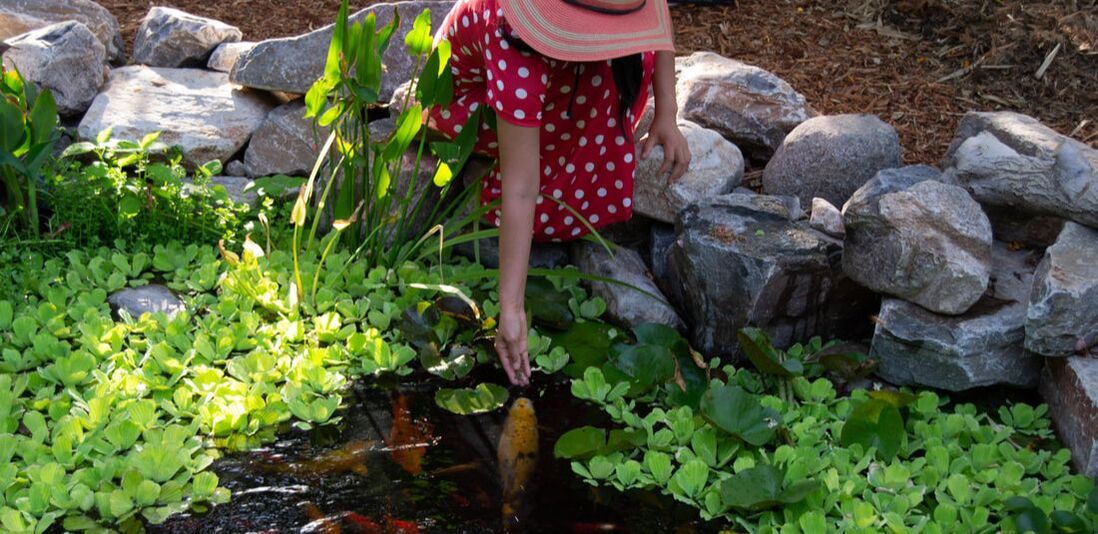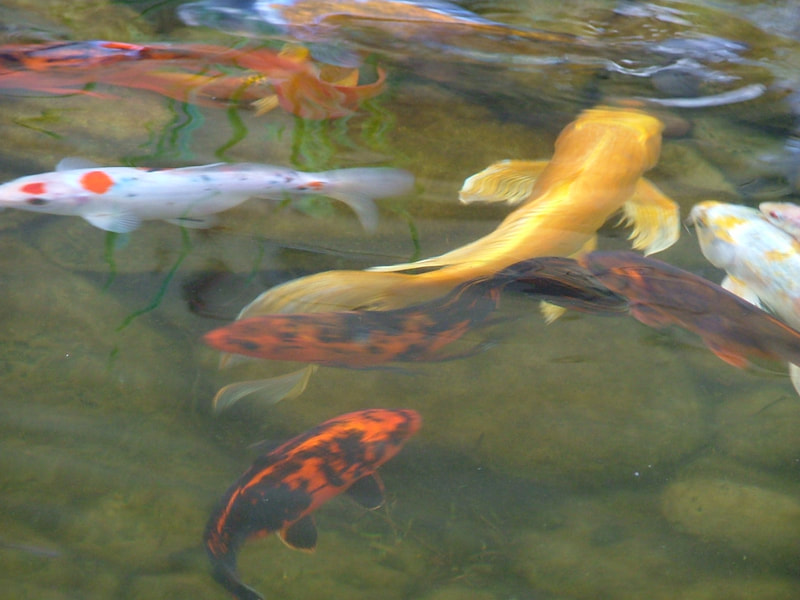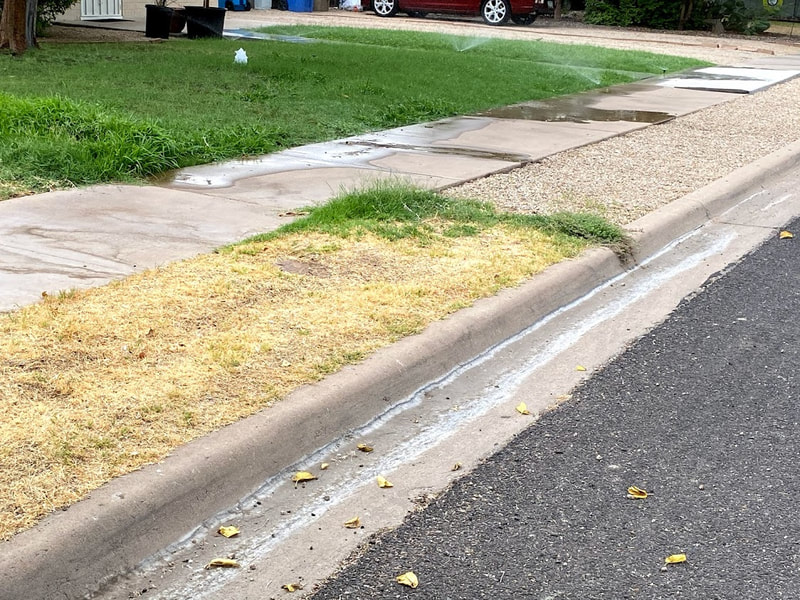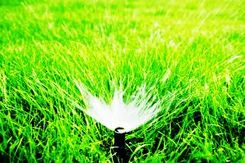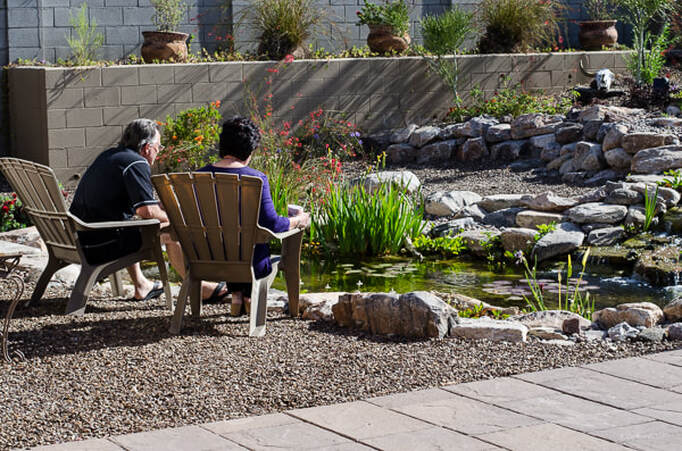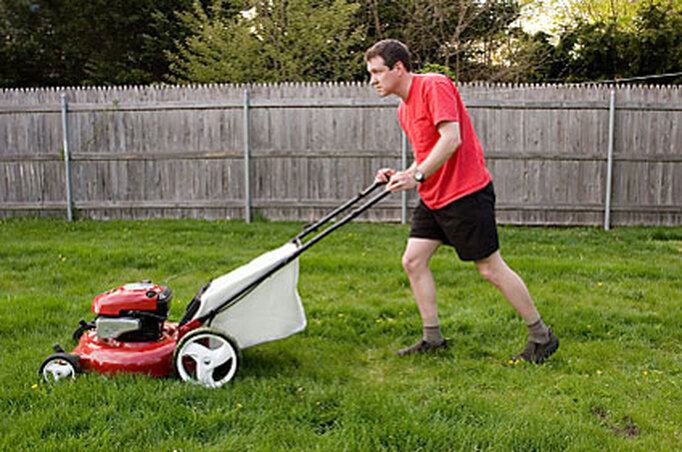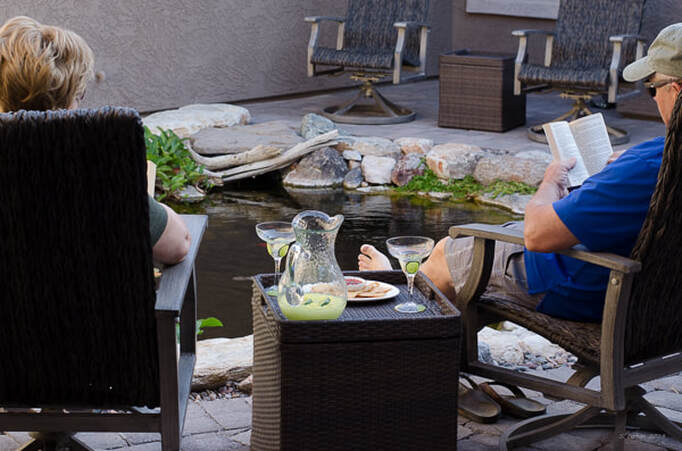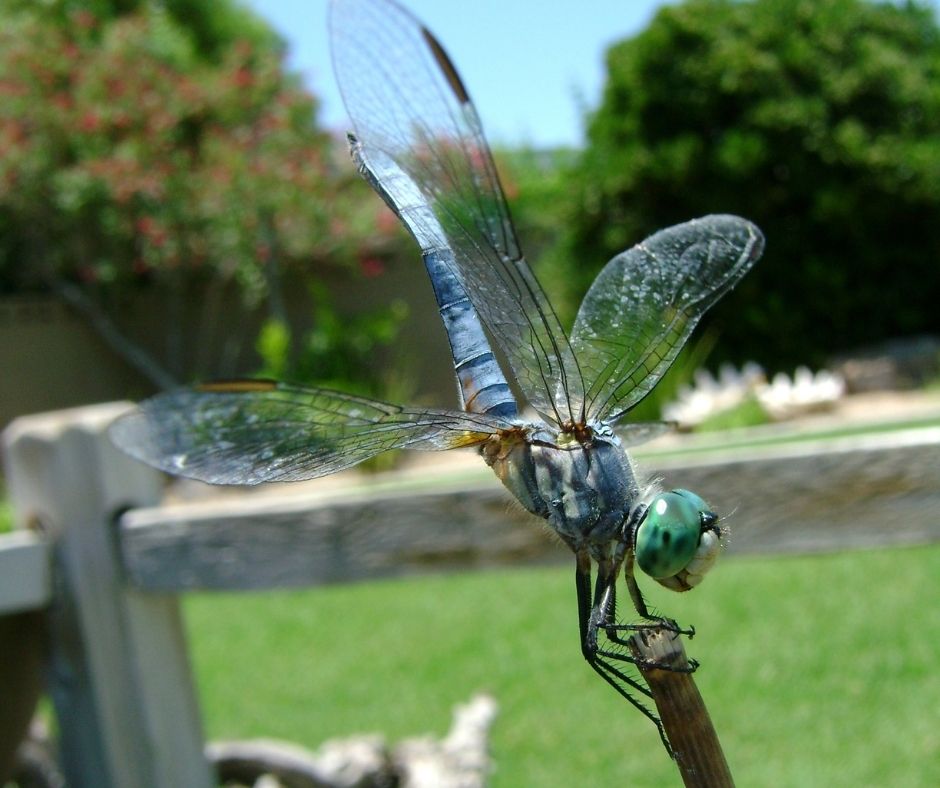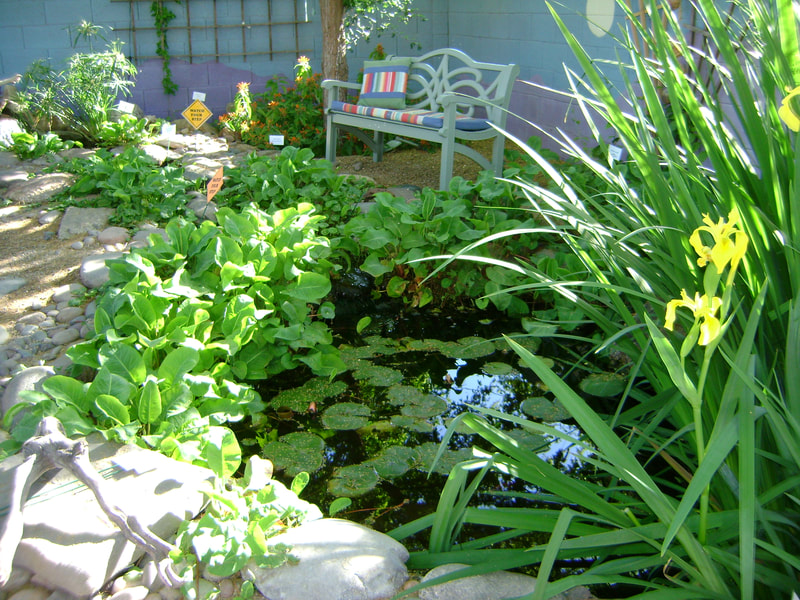A STRANGE FOAM IN THE PONDAn elderly client called one day concerned that there was a bunch of foam in her pond that wasn't there the day before. She described it, and is asked if it smells a bit like the ocean. She takes a big whiff and says that it does indeed! Trying to be delicate, in consideration of her age and sensibilities, it's explained to her that it's simply excess proteins in the water and told that it will dissipate in a day or two. She questions the assessment and doesn't understand what that means. So, she's told point blank that it's sperm. She gasps and, after a moment of complete silence, declares: "What kind of sick SOB would climb into my backyard and do that in my pond?!?!" After it was explained that it was merely fish sperm from spawning activities, she was relieved and felt much better. Everyone had a good laugh. So, if you notice an odd foaming in your pond, and it has a funny ocean-like smell, that means your fish are happy and gettin' busy. WHY ARE MY FISH FIGHTING?Along with the foam, you might also notice that your Koi are traveling around in a pack, and maybe it even looks like they're picking on one particular fish. Fish spawning is a rough activity. The boys must beat the eggs out of the female in order to fertilize them. If this doesn't happen, the female could have health issues resulting from not being able to release the roe. In rare occurrences, if you have too many male fish and not enough female fish, the males could damage or even kill the female during this activity. OTHER POSTS THAT MIGHT INTEREST YOU: Whether you’re new to koi ponds, or have enjoyed a pond for several years, you’ll want to know about three basic rules that will help you create and maintain a healthy habitat for your finned friends. We want fish to be happy and your water gardening experience to be as enjoyable as possible. Once you become familiar with your fish and their basic needs, you’ll be well on your way to enjoying the full benefits of living with a pond. 1. Fish Need Clean WaterYour pond water should always be clean-smelling and have good clarity. On occasion, the water might be green due to suspended algae, or slightly brown due to tannins. Algae is expected in the spring when the plants haven’t yet reached maturity for the season (the first weed in the garden, so to speak. Once the plants begin their aggressive growth, they consume more nutrients from the water effectively starving out the algae. Ponds in sunny locations experience higher algae growth, but this can be alleviated by shading the pond surface with waterlilies. Keep in mind, algae isn’t necessarily a bad thing. Your pond fish will graze on that algae so it’s good to have a little of the green stuff. It’s actually also part of your water filtration system to keep the water itself gin-clear. Too much algae can become unsightly but can be controlled with various water treatments or by hand-weeding it out. If you’re going to keep fish, it’s imperative that your pond have proper filtration. A mechanical skimmer is your first line of defense for removing unwanted debris such as leaves and twigs from the surface of the water. If left to decay, organic material can cause a host of water quality issues. The skimmer also houses the pump which circulates the water and helps to aerate the pond. A biological filter is positioned opposite the skimmer to create the beginning of a waterfall. This filter uses bacteria to break down pond waste, converting it into less harmful compounds that can act as aquatic plant fertilizers. 2. Maintain a Healthy PopulationOne secret to making sure your pond water remains balanced and healthy, is to control your fish population. Sure, it’s tempting to add lots of colorful koi and pond fish to your water garden, but you want to avoid overcrowding. Too many fish create excess waste in the pond water, which in turn can cause water quality issues. As a general rule of thumb, pond fish need 10 gallons of water for every inch of their length. So a 10-inch long fish needs 100 gallons. If you have five 10-inch-long fish, your water garden should have at least 500 gallons of water. Keep in mind that your fish are going to grow so be sure to understock your pond in the beginning. 3. Feed Your Fish AppropriatelyKoi and other pond fish will feed on natural sources such as algae and wayward insects, but they’ll benefit from a quality fish food. Just like other pet foods, not all fish food is created equal. You want to look for food that contains high-quality protein along with stabilized multivitamins and probiotics. Only feed your fish what they can consume in about three to five minutes. In the summer you can feed them twice per day, but in spring and fall (when the water temperature isn’t as warm) you should only feed them once per day. Be sure not to feed the fish at all after your pond water temperature is below 50 degrees Fahrenheit. You can, however, give them natural treats (fruits, vegetables, and even Cheerios) year-round. Following these three basic rules for keeping koi and pond fish will help ensure that your finned friends have a solid foundation to grow and thrive. You’ll enjoy hours of watching your colorful koi and goldfish swim around the pond, gliding here and there beneath the waterlily pads. It’s a great stress reliever and a perfect activity to enjoy a bit of nature in your own backyard with the family. OTHER POSTS YOU MIGHT ENJOY: Fish dart beneath lily pads while the melodious sound of a waterfall entertains your ears. Lush aquatic and terrestrial plants make you just want to take deep breaths of oxygen-rich fresh air. Enjoying a naturally balanced pond in your backyard is an attainable luxury for every homeowner. Most pond owners are aware of the importance that good water quality plays in a complete pond ecosystem. However not knowing how to get or keep water quality can prove challenging to some pond owners. A bit of basic knowledge will help you keep your pond looking beautiful and performing optimally. In addition to plants, fish, aeration, and rocks & gravel, a low-maintenance ecosystem pond requires adequate filtration to keep the water clean and clear. Three types of pond filters are available on the market and include biological, mechanical, and clarifiers.
The Job of a Pond SkimmerThe main function of mechanical filtration, or pond skimmer, is to remove debris before it sinks to the bottom of the pond and decays. The skimmer also houses and hides from view the pump and plumbing, as opposed to being placed directly in the pond where they can be an eyesore. There are two main types of skimmers: box skimmers and floating skimmers. Both types filter the water by removing floating debris and waste before it’s had a chance to fall to the bottom of the pond. The box skimmer is the predominant type of skimmer on the market today because it’s easy to maintain. Box-style skimmers come with either vertical or horizontal filter mats. Horizontal mats prove to be the most effective while providing the least amount of maintenance. In addition to frequent cleaning, vertical mats need to be constantly monitored to make sure there is enough water in the pump chamber for the pump to operate properly. An advantage of horizontal filter mats is that they lay flat so there is no sagging and they don’t lose their shape. They also never clog to the point of preventing water from passing through, so the pump chamber won’t run dry. As water enters the skimmer, the large debris are caught in the skimmer basket and the water is then further filtered through the horizontal mat. The pond water then travels up to the biological filter via the underground plumbing where it’s further treated before re-entering the pond. Biological Pond Filtration Goes to WorkThe biological filter receives water that has already passed through the mechanical filter, or skimmer, typically placed on the opposite side of the pond. The water enters the biological filter via flexible pipe located near the base of the unit. The water then flows from the bottom to the top of the filter, traveling through filter media housed inside the unit. This filter media helps with the removal of fine to medium-sized particles after the larger debris has already been removed by the skimmer. As the biological filter fills, it will overflow and pour over its waterfall lip, cascading down rocks that have been set to create a beautiful, natural-looking waterfall. The waterfall creates aeration for the pond, assisting in the circulation and health of the water Biological filters on the market today range in size and can filter ponds up to 10,000 gallons. For larger ponds, multiple biological filters can be incorporated into the design. The Science Behind the DesignMechanical and biological filtration are critical to processing the many types of nutrients found in a pond ecosystem, including fish waste, uneaten fish food, leaves, and runoff from lawns, to name just a few. High levels of ammonia (a form of nitrogen) are highly toxic to fish and are a major contributor to prolific algae growth, so they need to be carefully controlled. In water gardening, the primary nutrient that biological filtration utilizes and renders usable is nitrogen. In biological filtration, nitrifying bacteria, known as facultative bacteria, absorb ammonia and turn nitrites into less dangerous nitrates. These bacteria require oxygen to live, so it’s important for the pond’s pump to run 24/7/365. If the pump isn’t running, the waterfalls aren’t flowing, and aeration is eliminated from the necessary equation to maintain an ecosystem pond. Keep in mind that if the pump shuts down, the bacteria will quickly use up all of the oxygen and die, which isn’t a good thing. Nitrates are then removed from the pond by another biological filtration method known as de-nitrification. This process occurs only in anaerobic (without oxygen) areas of the pond. That’s why it’s not necessarily bad for some areas of the pond to experience minimal water flow (such as on the bottom of the pond, under an inch or so of gravel). The bacteria that live in this area of the pond turn nitrates into nitrogen gas, which is released into the atmosphere. Nitrates are also absorbed by aquatic plants and algae during their growth processes. A pond without aquatic plants will prove to be a maintenance nightmare. For any biological filtration to work, there needs to be billions of bacteria working to purify the water. They prefer to anchor onto things, which is why surface area is so important. More surface area means more bacteria and more bacteria means better biological filtration. The surface area is provided by filter media, rocks, and gravel. A pond with gravel on the bottom will contain more surface area for bacteria, as opposed to a pond with exposed liner on the bottom. The Role of Aquatic PlantsAnother important component of pond filtration is the use of plants. Many gardeners add a pond to their landscape for the variety of aquatic plants available, and while their beauty is certainly an aesthetic asset, a critical benefit is the work these plants do to help filter the water. Plants help purify pond water by reducing nutrients, filtering out sediments, and absorbing toxic compounds through the process of phytoremediation. If these excess nutrients are not removed, algae will feed on them, resulting in green water, string algae, or both. Algae control is not the only way plants help create a low-maintenance ecosystem pond. Submerged and marginal plants also provide food, shade, and protection for the fish and other wildlife that live in and around the pond. Low-Maintenance Pond ExperienceTo keep pond water quality high, the simple process of repeatedly turning the water over through mechanical and biological filters is needed to create a naturally balanced, low-maintenance ecosystem pond. Add the remaining components of plants, fish, aeration, rock, and gravel, and you’ll find greater success in maintaining clean and clear pond water. Your fish are happier and less stressed when their environment is healthy. Not to mention, it’s so much more enjoyable when you can actually see your fish swimming in clean water created by an efficient pond filtration system. OTHER POSTS YOU MIGHT ENJOY: Buying new pond fish for your water garden is a fun and rewarding experience that typically happens in the spring thru early fall here in Phoenix. Although you’re excited to add finned friends to your pond, be sure to ask yourself the following questions when you’re at the pet shop:
Whatever type fish you choose to add to your pond, first and foremost you want to make sure they’re healthy. Don’t be shy about asking a few questions. In the end, you’ll be glad you took the time to purchase the right pond fish for your water feature. OTHER POSTS YOU MIGHT ENJOY: Backyard ponds have become an exciting landscaping trend! Most homeowners want a pond to add ambiance to their yard or to simply enhance their outdoor living space. Their goals range from fish collecting to plant collecting to simply wanting to enjoy the sight and sound of water. Ponds create a respite from the techno-crazy world and a haven for prized Koi and local wildlife. Yet few realize the countless environmental benefits of installing an ecosystem pond or water feature. According to the National Gardening Association’s 2008 Environmental Lawn and Garden Survey, 9 out of 10 households believe it’s important to maintain their landscape in a way that benefits the environment. However, only about half of those are knowledgeable about how to maintain lawns and gardens in an environmentally-friendly way. Lots of homeowners hire a service to care for their landscape, and as long as it looks good, they don't really pay attention to what chemicals are being used, etc. Those that maintain their own, tend to run to the big-box store, buy chemicals, don't really read the instructions, and use way more than what is truly necessary. Many people don’t realize that by replacing some (or all) of their lawn with a pond or water feature, they can conserve water and energy, save money, and support the environment – not to mention reduce personal stress. Lawns use A LOT of waterAccording to the University of Arizona, the average 15'x15' bermudagrass lawn uses over 5,000 gallons of water per year. A typical residential lawn sprinkler system broadcasts about 10–18 gallons per minute, per valve or zone. By the way, broadcasting water like that increases evaporation and the lawn doesn’t really receive as much water as is being broadcast. So, if a lawn has two zones and runs for 15 minutes each three times per week, the water consumption would range between 4,500 and 7,560 gallons per month. In Phoenix, that would equate to about $175 to $275 per month on your water bill. Yikes! PONDS USE LESS WATER THAN A LAWNEvaporation on a pond is the same as on a swimming pool: 1” per day per square footage of surface area during the hottest, driest months of the year (typically mid-May through mid-June). During the rest of the year, the evaporation is negligible. AND you’re not adding water during monsoon storms and general rain days. Unless you have one of those expensive timers that detects the moisture in the air and doesn’t water when it’s raining, your lawn gets watered no matter what. A pond will have an autofill device that only adds water when it’s needed. Lawns GENERALLY require more maintenance than pondsMaintaining a lush lawn obviously requires regular watering, as pointed out above. But there’s also a LOT more that goes into maintaining a nice-looking lawn, right? You also have to fertilize it. When not done properly, runoff of excess fertilizer causes groundwater pollution. The EPA estimates that only 35 percent of lawn fertilizers applied ever reach the grass plant – the remainder ends up in our air or seeps into our water supply. During a typical year in neighborhoods across the country, over 102 million pounds of toxic pesticides are reportedly applied in pursuit of that perfect lawn and garden, says the National Coalition for Pesticide-Free Lawns. Is your “little patch of estate” worth that? You have to mow and edge it, enslaving the average man (or woman) for at least half a day on any given weekend. Aside from the time involved, about 54 million Americans mow their lawns each weekend, using 800 million gallons of gas per year, AND producing tons of air pollutants, according to the US Environmental Protection Agency (EPA). Garden equipment engines emit high levels of carbon monoxide, volatile organic compounds, and nitrogen oxides, producing up to 5% of the nation’s air pollution (and a good deal more in metropolitan areas). A traditional gas-powered lawn mower produces as much air pollution as 43 new cars, each being driven 12,000 miles. Lastly, more than 17 million gallons of gas are spilled each year refueling lawn and garden equipment. To put that into perspective, that’s more than the amount of oil that was spilled by the Exxon Valdez in the Gulf of Alaska. And this all adds to groundwater contamination and smog, the EPA reports. And then there's the noise pollution. The sounds of lawn mowers and edgers are NOT soothing. They are an irritant to anyone within range. PONDS ADD TO THE AMBIENCE AND REDUCE STRESSPonds, however, reduce the need for lawn pesticides and fertilizers. They require about 10 minutes of maintenance per week, and pay you back with hours of enjoyment. And they certainly don’t require any gas-powered equipment. As an added benefit, the debris and sludge collected by your pond filter can be used as a nutrient-rich fertilizer for your lawn, garden, and/or trees. And as to sound, who wouldn't rather listen to a waterfall or babbling brook rather than mowers & blowers? Now, if you have a bunch of kids that need a football or soccer field to play on, then by all means, plant a lawn! Or you could make use of a nearby park and let the City deal with the time and cost of the maintenance. But if you’re looking for a low water use, low maintenance, super enjoyable, and entertaining landscape option, you might want to consider an ecosystem pond or water feature. OTHER POSTS YOU MIGHT ENJOY: |
The Pond Gnome offers Pond Design, Pond Construction, Pond Maintenance, Pond Remodeling, Pond Replacement, and Pond Cleaning Services for the Greater Phoenix Metropolitan area, including the cities of Phoenix, Scottsdale, Paradise Valley, Carefree, Cave Creek, Glendale, Peoria, Sun City, and other surrounding communities.
Our Services |
Company |
|

